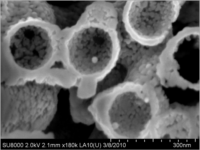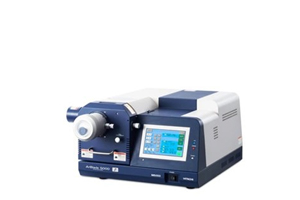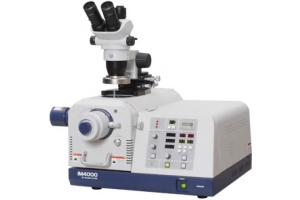Table Of Contents
How does ion milling work?
Ion milling is a precision material removal technique used in microscopy and materials science. In ion milling, a high-energy ion beam, typically composed of argon ions, bombards a sample’s surface at a controlled angle. These ions sputter away surface atoms, gradually etching a thin layer of material. By adjusting parameters like ion energy and angle of incidence, researchers can precisely control the milling rate and depth. This process creates a flat, polished cross-section of the sample for microscopic analysis, revealing its internal microstructure and features. Ion milling is invaluable for preparing samples, especially those with delicate or heat-sensitive materials, for electron microscopy and other analytical techniques.
The ion milling systems manufactured by Hitachi High-Tech apply a broad low-energy Ar+ ion beam to sputter sample material. Cryogenic ion milling is even possible for heat sensitive samples to reduce damage by beam irradiation. Both systems, the IM4000II and the ArBlade5000 are hybrid models suitable for two different milling configurations: cross section milling and flat milling.
Cross section milling:
A mask is placed directly on top of the sample. This protects the top surface and provides a sharp edge to create a polished cross section by sputtering material away that is exposed beyond the edge of the mask.
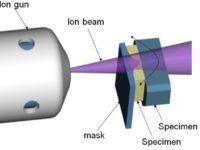
Flat milling:
The argon ion beam has a Gaussian-shaped current profile and material removal rate is therefore higher at the center of the beam than at the surrounding area. For this reason, the ion beam center is eccentric from the sample rotation center. As the sample rotation and swing center are varied with respect to the ion beam center, a wide area can be sputtered uniformly.
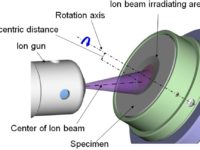
Why use ion milling?
Conventional grinding and polishing techniques often generate flaws and artifacts such distorted structures, superficial scratching or smearing. Cross sections prepared by cleaving or mechanical methods often induce damage and result in distorted internal structures. The cross section polishers from Hitachi create cross sections without applying mechanical stress to the sample and enable analysis of sub-surface structures. Flat ion milling removes the upper most sample surface layer and can be utilized as a final process finishing to expose microstructures and crystal grain arrangements.
Applications of ion milling
Relief ion milling VS. flat ion milling
Because of the Gaussian-shaped argon beam, it is possible to emphasize topographical information of composite materials (relief ion milling) or to reduce surface topography for enhanced crystal orientation visualization (flat ion milling) by adjusting the beam irradiation angle.
Flat ion milling at an oblique angle minimizes the dependence between sputtering rate and crystal orientation, yielding reduced surface topography and a flat sample surface. If the topography of composite materials is of interest, relief ion milling is applied. By sputtering perpendicular to the sample surface, convex and concave surfaces appear caused by compositional differences or grain orientations.
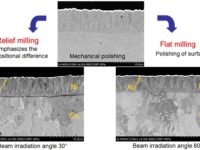
Electron backscatter diffraction (EBSD)
EBSD is a characterization technique used to study the crystal orientation and material phases within the sample. Within a SEM, the primary electron beam interacts with a tilted crystalline sample. Electron diffraction occurs and these electrons interact with a phosphor screen to become fluorescent. These signals are detected and a characteristic diffraction pattern is obtained. Slight variations in surface height change the angle of incidence of the electrons, thereby effecting diffraction patterns. For that reason, flat ion milling is typically utilized as sample preparation technique to obtain flat surfaces for EBSD measurements.
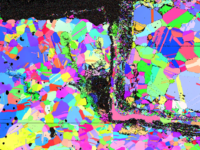
Powders
Cross-section polishing of powdered materials is a vital technique with diverse applications. It involves preparing polished surfaces within powders for microscopic analysis. In materials science and metallurgy, it aids in characterizing materials, detecting defects, and improving product quality. In pharmaceuticals, it ensures medication uniformity and safety. Industries rely on it for quality control, while it’s essential in failure analysis for structural assessment. Geological and environmental researchers use it to study samples, and it supports R&D efforts. In forensics, it helps identify trace evidence. This versatile technique plays a pivotal role in enhancing quality, safety, innovation, and knowledge across various fields.
Even the inside from individual powder particles are revealed with cross section polishing. If a sufficient amount of powder is mixed with epoxy and cured, the new block can be cut and processed with the ion miller. In battery research, powder analysis is common practice. Catalysts and cathodes are analyzed to improve their performance. The following image shows hollow zirconium shells containing one active nanoparticle.
